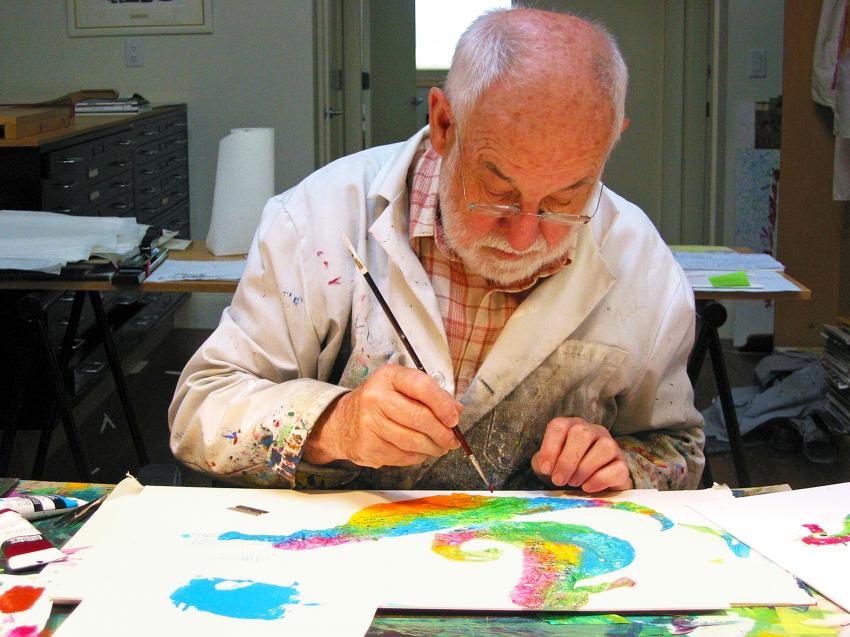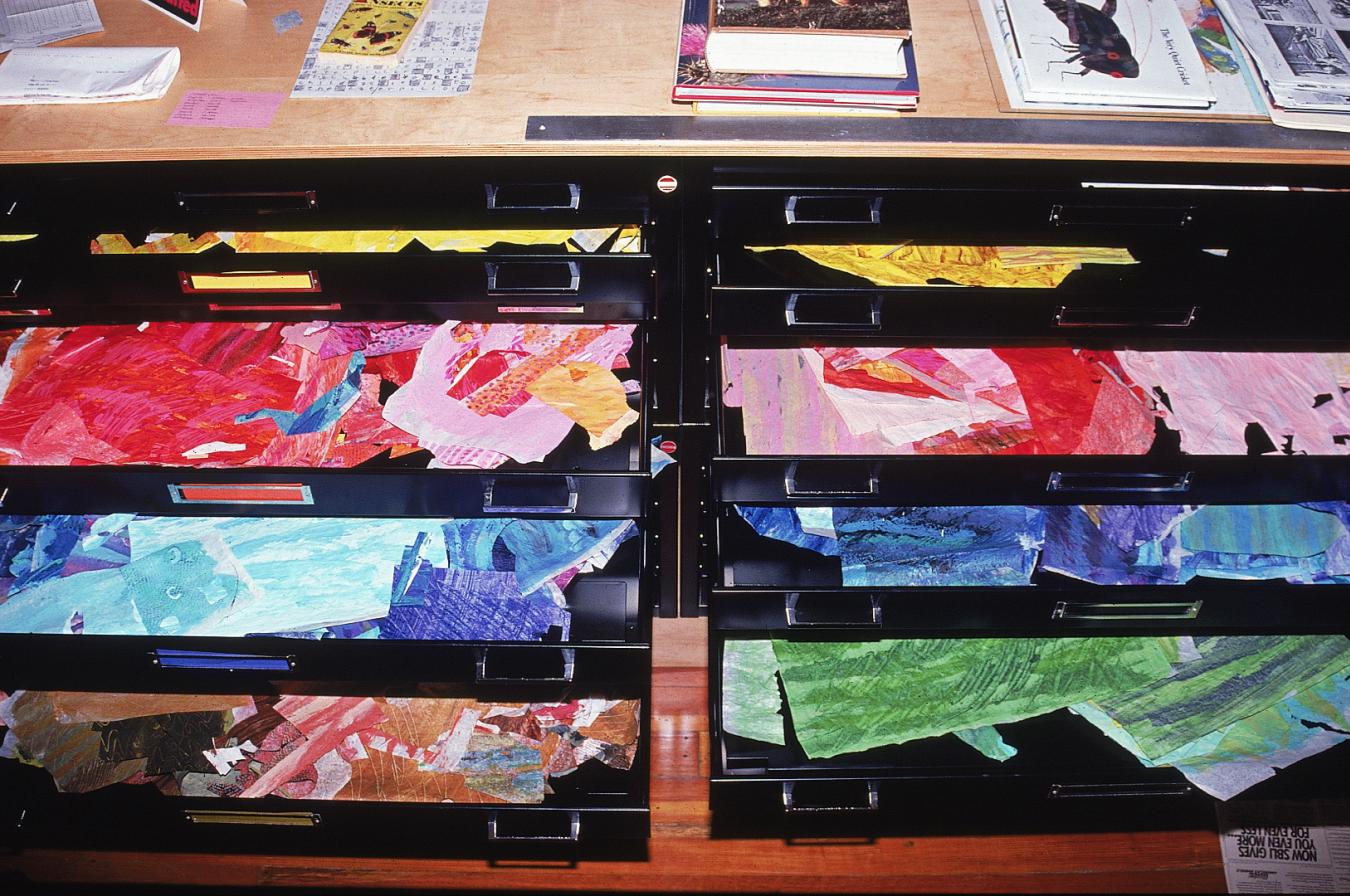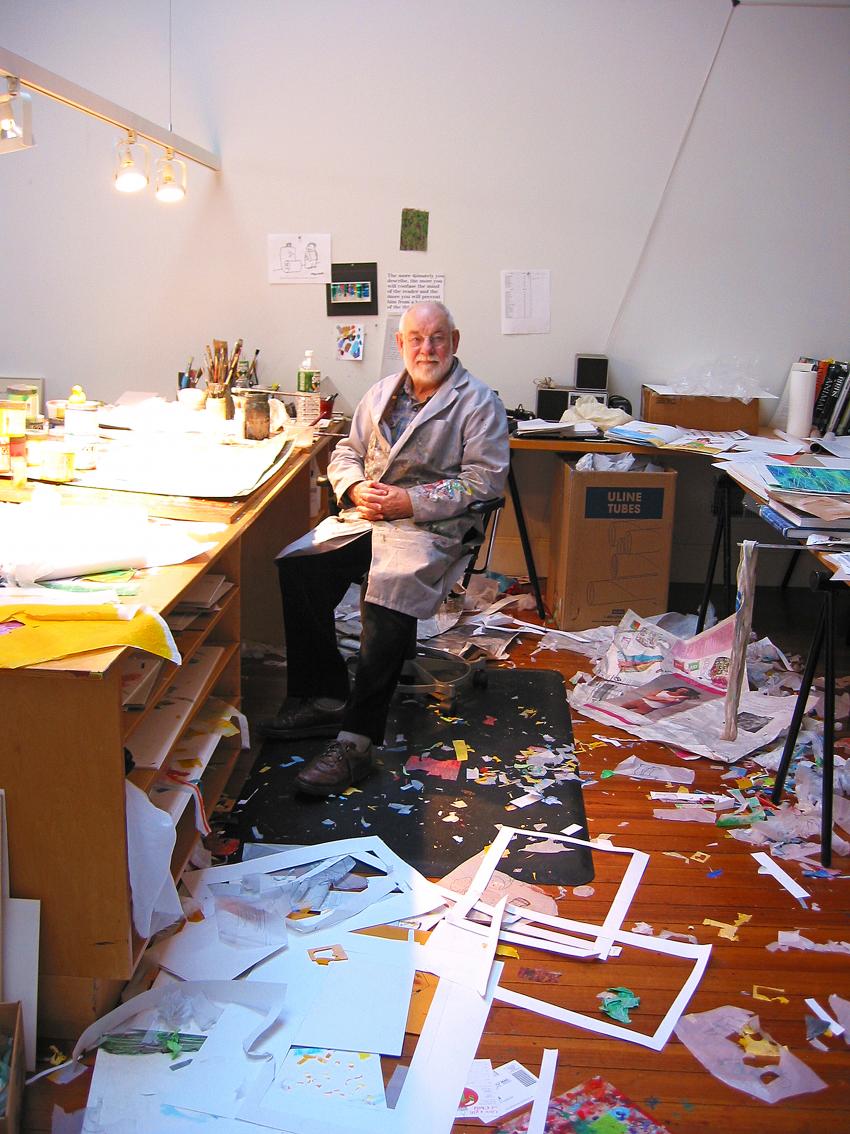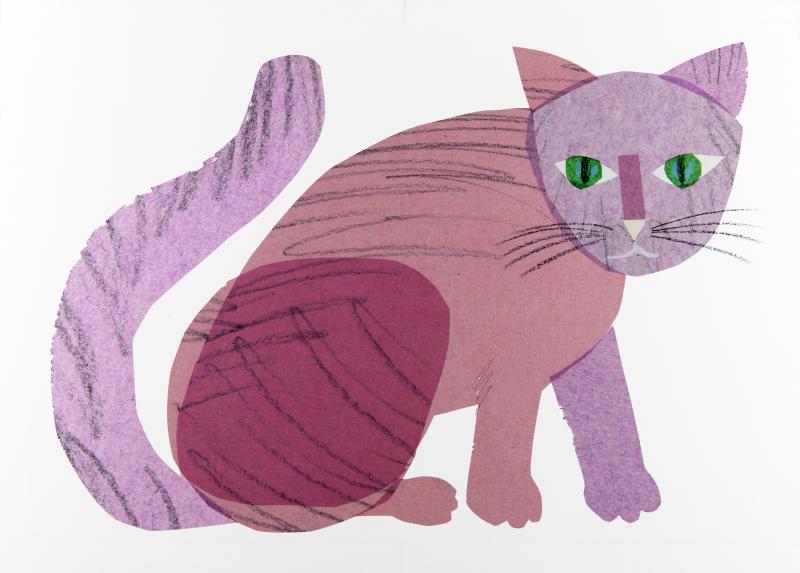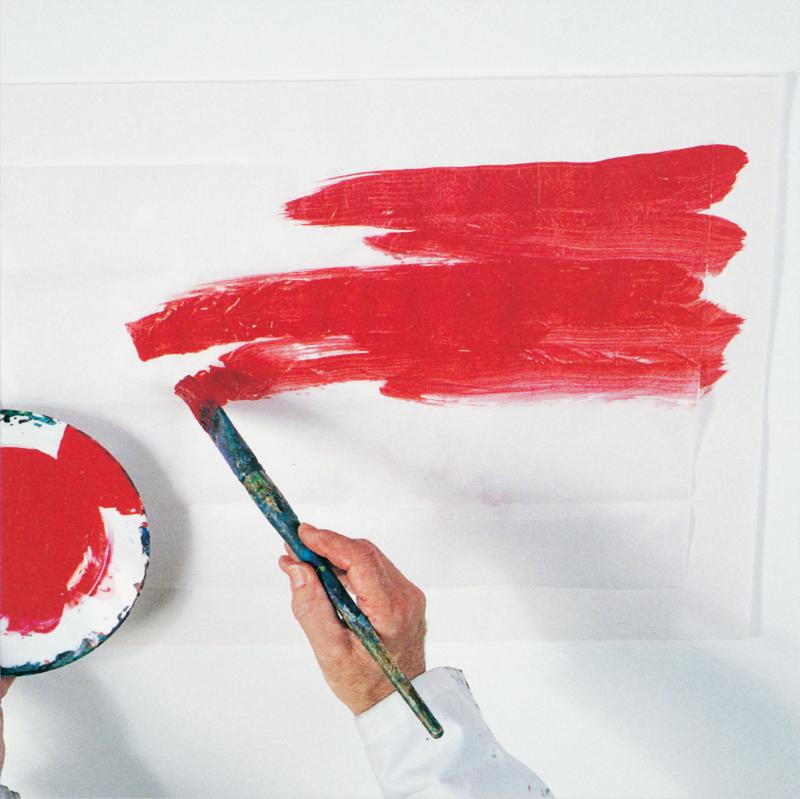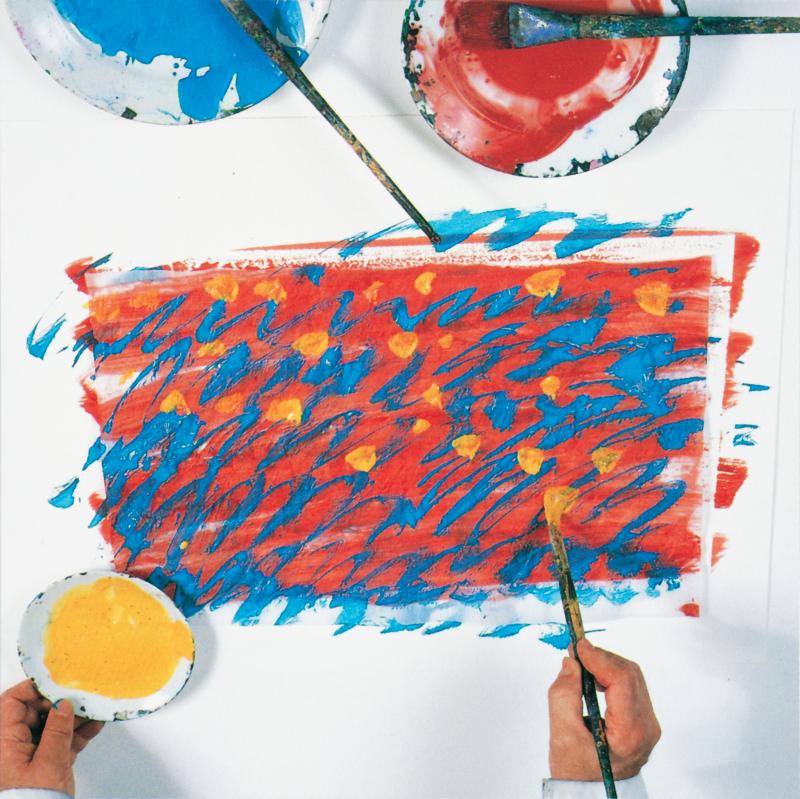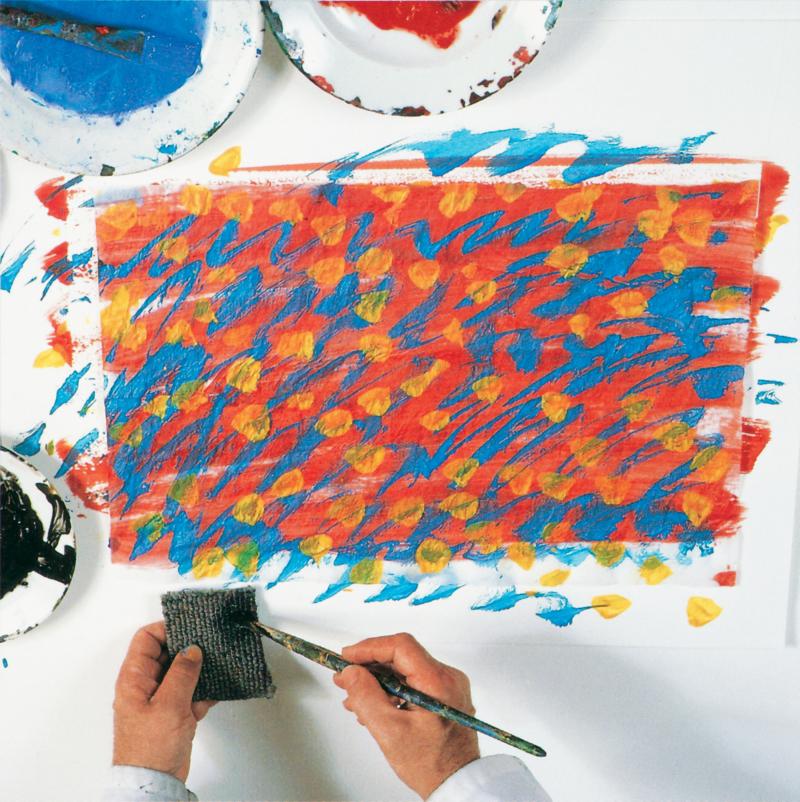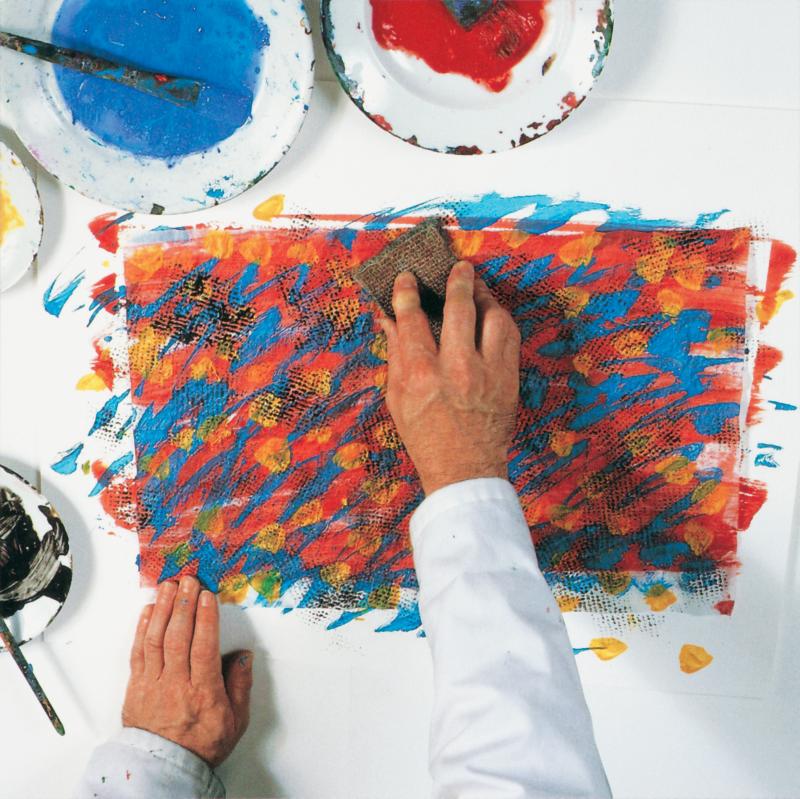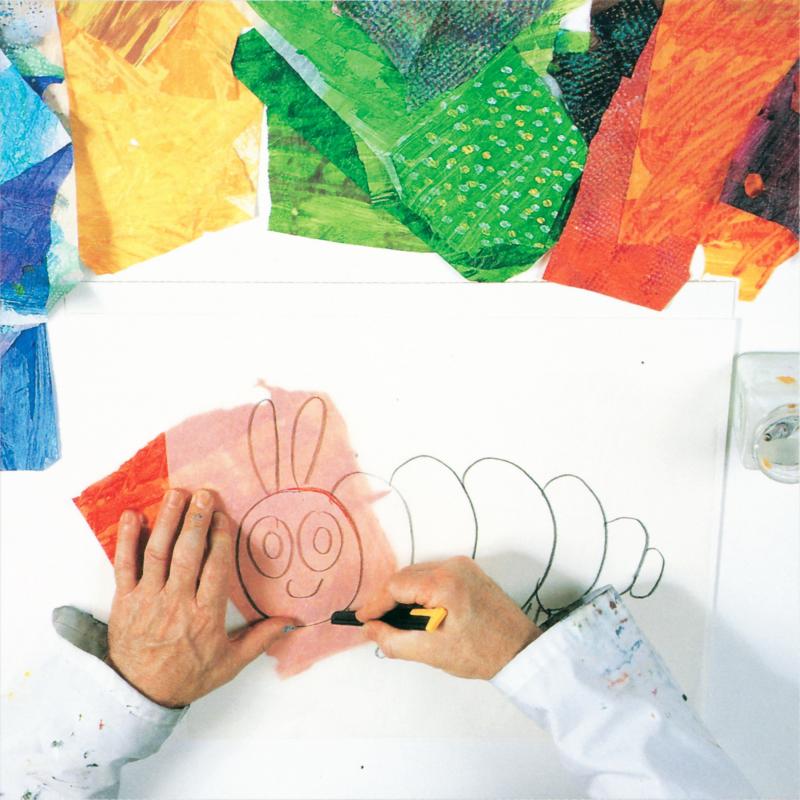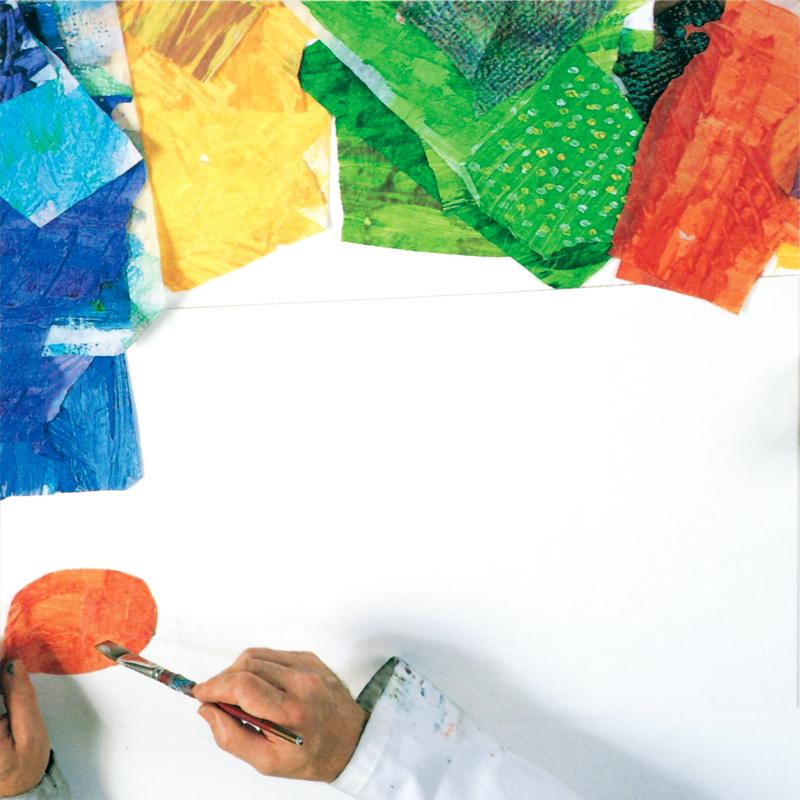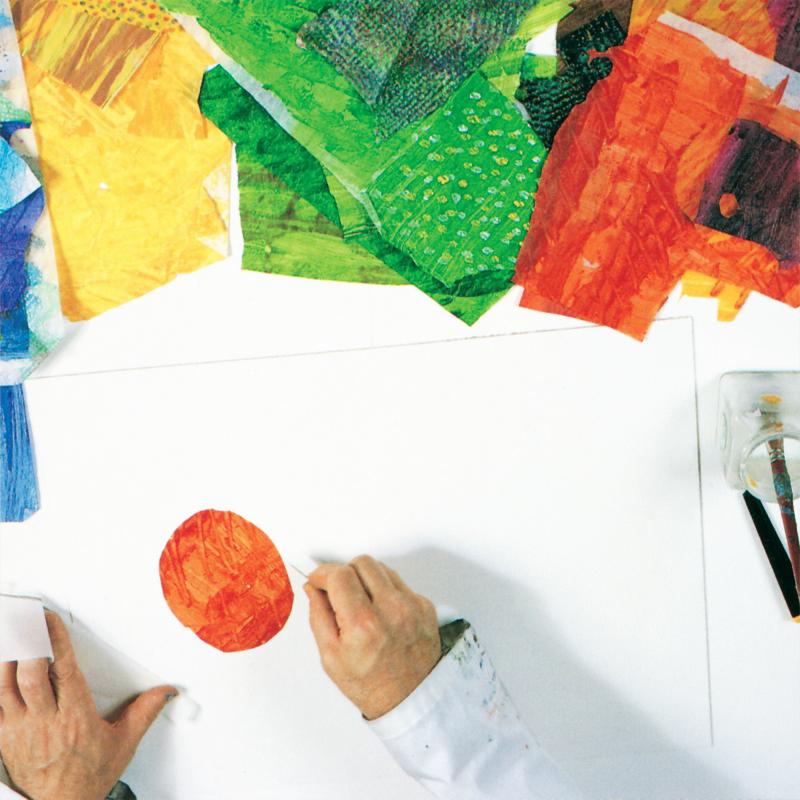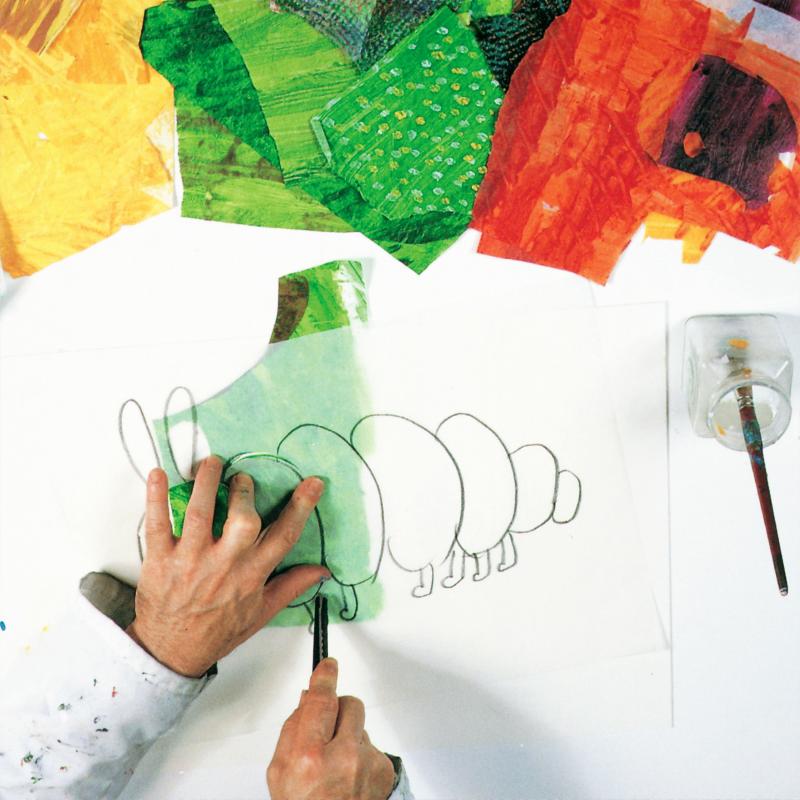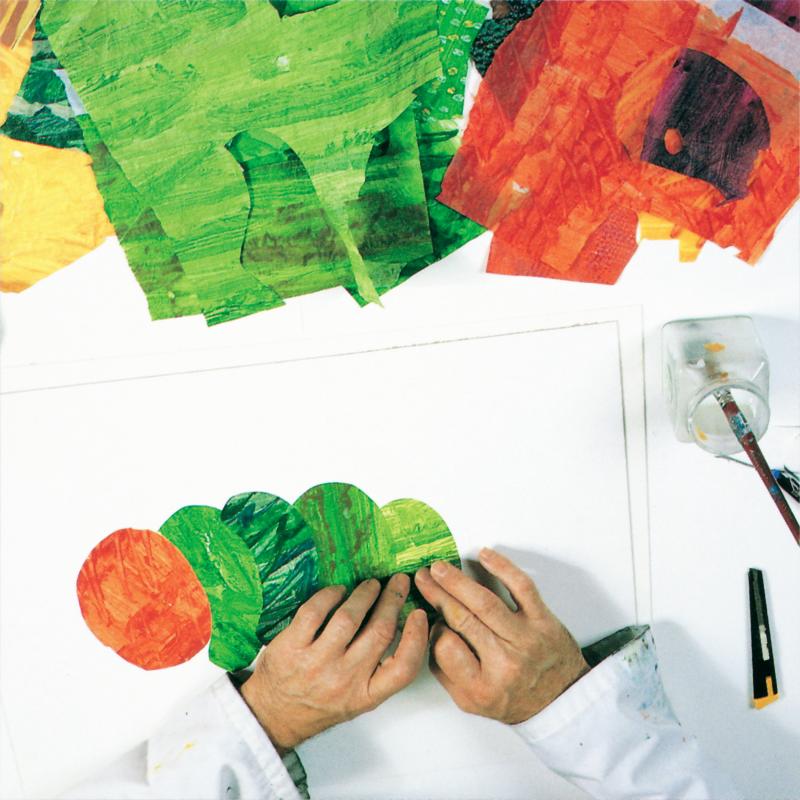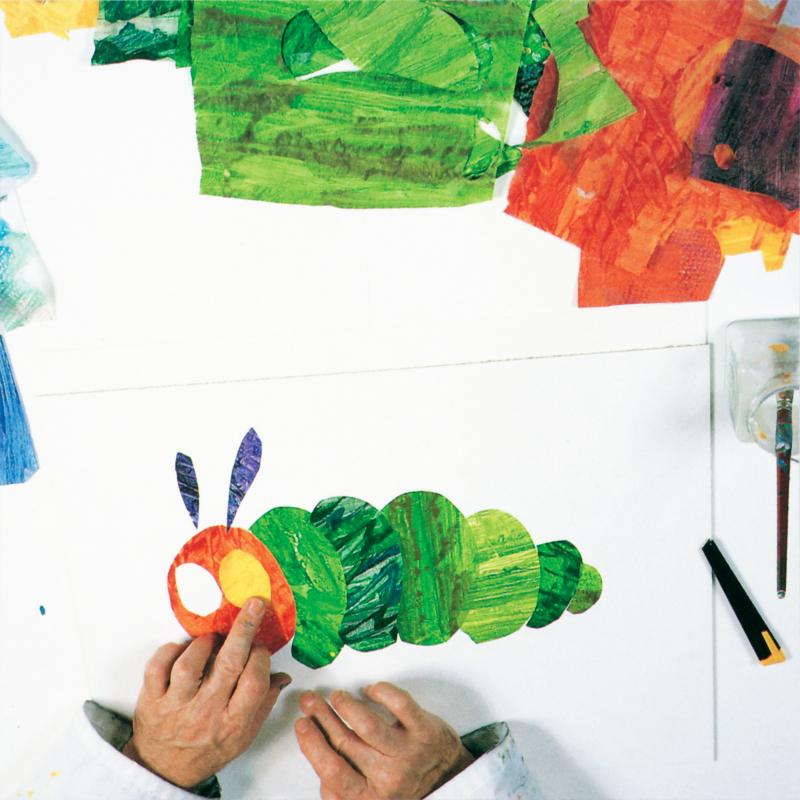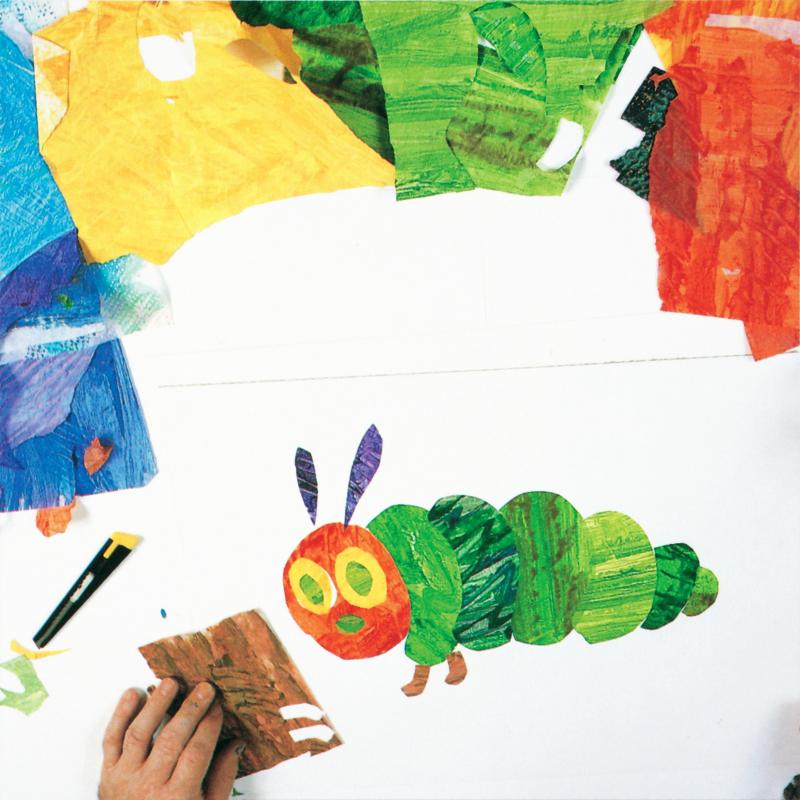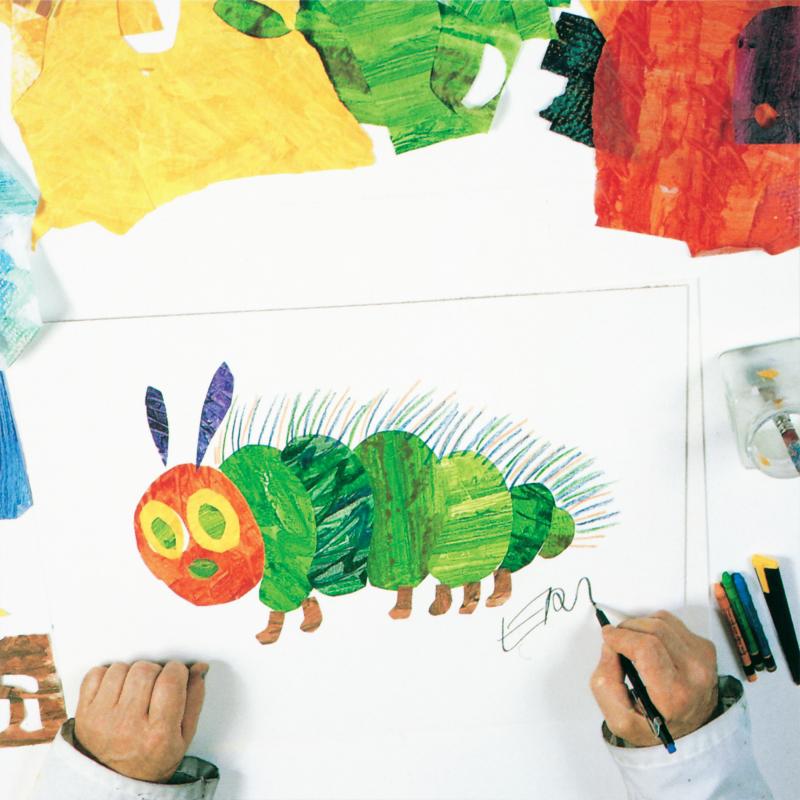To create his signature collages, Carle painted acrylic on white tissue paper to achieve vibrant colors and patterns. Each piece was an abstract work of art that he could cut and use in a collage.
Prior to the mid-1980s, Carle used commercially available, pre-dyed papers, the colors of which quickly faded. Later he employed acid-free paper and methyl cellulose adhesive, rather than rubber cement, to ensure the longevity of his art.
Carle’s two versions of the purple cat from Brown Bear, Brown Bear, What do you See? demonstrate how his illustrative style evolved over time. His 1992 cat, constructed with vivid hand-painted tissue papers, has richer color variations and a more active pose.
Carle painted his tissue papers in bright acrylic colors. In the sequence below, he first made bold red strokes on a sheet of white tissue paper. Once dry, he added blue wavy brushstrokes, then yellow dots. In the final step, he applied black paint to a piece of carpet and printed patterns on the design.
The images below demonstrate how Carle made a caterpillar collage. He used tracing paper, a utility blade, adhesive, and his painted tissue papers. With a crayon, he added the final touches.
“There are many different media to work in. I just happen to like collage. I enjoy the process of gluing the pieces down in a picture,” said Carle. “I am very interested in details, brushstrokes in a painting, and textures. So the process of painting my tissue papers is very satisfying to me.”

